|
|
Expedition
Expedition | People
|
Log - July-28-2003
by Gerhard Behrens and Robert McCarthy
Previous | Next
Thank you, thank you, thank you
Robert McCarthy |
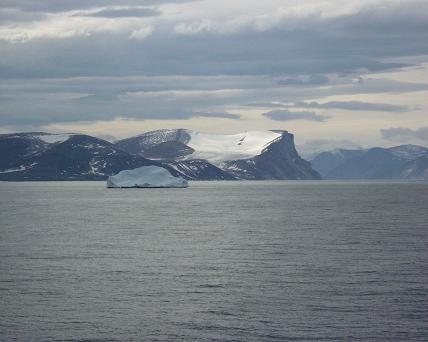
Fig 1: Spectacular scenery. |
Yesterday we saw land for the first time since we left St. John’s Harbor, and the scenery was spectacular (See figs 1 and 2). Seeing these sights, caused me to reflect on what an amazing opportunity I have to be on board the USCGC Healy and to be around a fantastic crew and scientific party. I can’t thank Dr. Kelly Falkner, the Chief Scientist, enough for allowing a high school teacher like me to be apart of this cruise. Also I extend my deepest thanks to Dr. Andreas Muenchow, an old friend from my graduate studies, for first contacting me with this unique opportunity. Thanks go out to all the other scientists on board who are willing to take time out to explain their research and techniques to Gerhard Behrens and myself. The crew of the Healy are special people, who are equally friendly and willing to give Gerhard and me tours around the ship. Their love of the ship and devotion to it shines through in conversations with them. The cooks are greatly appreciated for their care and preparation to each meal. Everything has been delicious, and I thank them from the bottom of my stomach. I can’t believe I have 3 more weeks of this once in a lifetime experience. And lastly, I’d like to thank my wife and children for understanding what this means to me, and that it was an opportunity I could not say no to. This thank you note will probably be repeated again sometime soon, since you can never say it enough. That’s probably one of the reasons I love teaching so much. It is very rewarding when a student unexpectedly comes up to thank you for helping them, or just making their year an enjoyable experience. I am certainly lucky and blessed with family, friends, and career. |
| Last night I experienced working the 15:30 hr to 23:30 hr shift. The ship is constantly taking data 24 hours a day, and unless we are on-station, the data taking is automated. But, this sometimes goes wrong, and someone has to correct the data taking via the computers. There are usually two people assigned to an eight hour shift to monitor the computers looking for bad, spiky data that signals a correction is required. Last night I basically watched Melissa Zweng monitor the Sea Beam, and the underway ADCP computers. She was very patient with me, and I feel more at ease having benefited from her experience. The Sea Beam sometimes had a hard time getting a good bottom reading, so that was periodically switched from an automatic mode to a manual mode. The information obtained from the Sea Beam (See fig 3) was a critical piece of information that the coring team needs to decide upon the 4 locations for their cores. So if nobody was periodically checking that output screen, conceivably some important data could have been lost. Lastly, I was shown how to take a water sample, and this procedure was done three times during my watch. I didn’t do too much, but it was good feeling that I was contributing to the science team. |
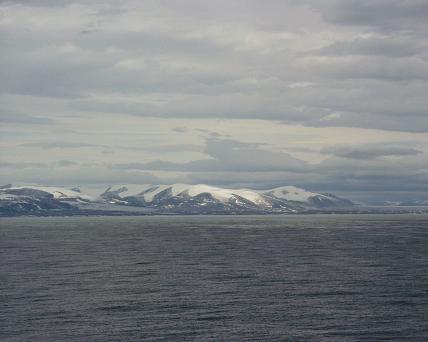
Fig 2: More incredible scenery. |
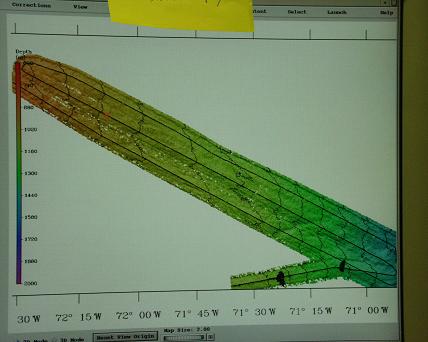
Fig 3: Computer screen output from the Sea Beam plotting bottom bathymetry. |
Relaxing and working
Gerhard Behrens |
| Yesterday was Sunday. In some ways you could feel it, and in other ways it was like any other day. The ship’s crew goes on a holiday schedule. That means they get to sleep in, there are less watches (remember, a watch is the job you do on the ship), mealtimes are longer, there are two religious services, and the living room areas will show matinee movies. Things are more relaxed. |
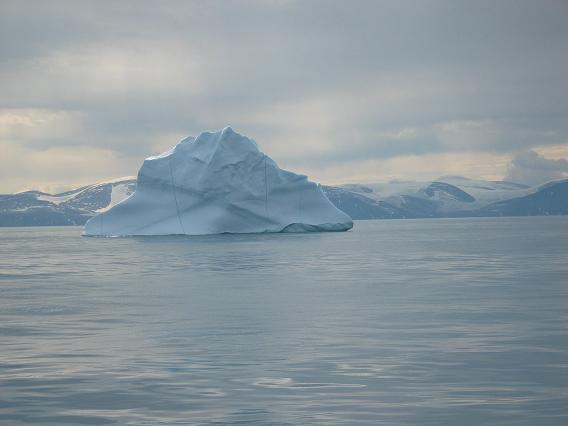
One of many icebergs, with Baffin Island in the background. |
| Because getting to this place in the world is so hard, the science crew had to work like any other day. The team of people who were collecting water samples kept going until early afternoon. For some, it was almost three days of work with only a few hours sleep. The team watching the mapping of the ocean floor and the team testing the temperature and saltiness of the top layer of ocean water also kept going without a break. The team of people involved with coring (digging 30-50 feet down into the ocean floor with a steel pipe) had to get ready because their job is coming up today.
|
| Even though there was some work and some relaxing, there was a good feeling on the ship late in the afternoon. The water sampling team had finished their first round of work and they were tired but happy. We saw land for the first time in a week. The mountains of Baffin Island and Bylot Island come right out of the ocean. They were still full of snow and showed off their glaciers. A whole family of icebergs was floating by, too. Each one was very different in shape and size. When these huge chunks of ice float by without a sound, it adds to their mystery and beauty. To top it off, it was a sunny day and the temperature was a mild 8°C, or 47° degrees F. Because of the beautiful land, the incredible icebergs, the sunny weather, and a short break in the work schedule, about 50 people from the crew and science team were on the bow deck. Everyone was snapping pictures or taking videos. Looking out on the scenery, I felt like I was on the cover of National Geographic magazine. |
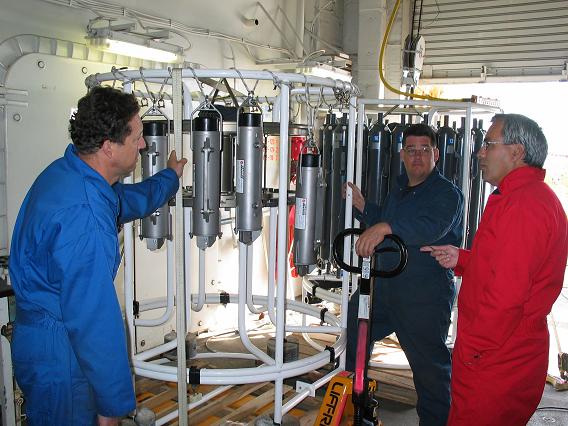
Ron Lindsay, David Huntley, and Jay Simpkins discuss strategy. |
| As the crew and the science team enjoyed being on the deck, I thought about the teamwork that goes into a project like this. Some of the money for this mission comes from the United States’ National Science Foundation (NSF). Another chunk comes from Canada’s Department of Fisheries and Oceans. But that’s just the beginning of the cooperation that makes this project work. From the United States, there are scientists and workers from Oregon State University, University of Delaware, University of Rhode Island, and the University of Hawaii. From Canada, scientists and workers come from Bedford Institute of Oceanography, Institute of Ocean Sciences, Canadian Ice Service, Meteorological Service of Canada, University of Victoria, and the Nunavut Territory. |
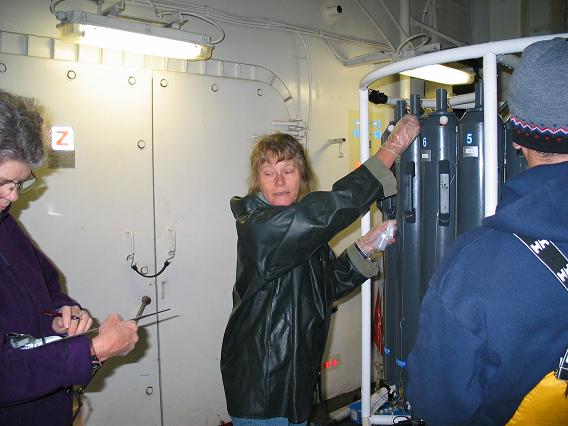
Mary O’Brien collecting water samples. |
The science team couldn’t do a thing without the help of the US Coast Guard. From cooking our meals, to making our water, to handling the cranes, to providing computers, to steering this huge ship, the crew makes sure the scientists can do their work. The huge science team is lead by American Kelly Falkner and Canadian Humfry Melling. Captain Daniel Oliver commands the Healy, and all it does for us. |
| Everywhere you turn, there is cooperation. Jay Simpkins, from OSU helps mooring tech David Huntley put together the Univ. of Delaware equipment. Ed Hudson, the meteorologist, ties lengths of rope for Humfrey Melling who is placing pressure moorings in the ocean. He also shares his pictures on the ship computer. Mary O’Brien who also works on the clam project stayed up all night to help get water samples from the rosette. The helicopter crew, the engineering crew, and the kitchen crew have given the teachers tours of the ships’ operations. |
| I once heard that the biggest reason a person gets fired from the job is for not getting along with the people you work with. I am glad to be part of a big team of people who know how important it is to work together. |
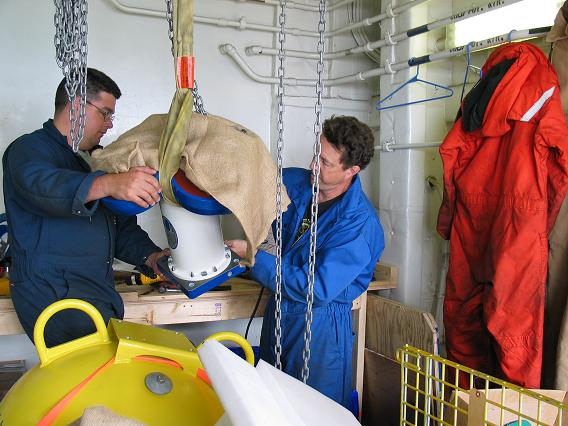
David Huntley and Jay Simpkins moving ADCP device. |
|
